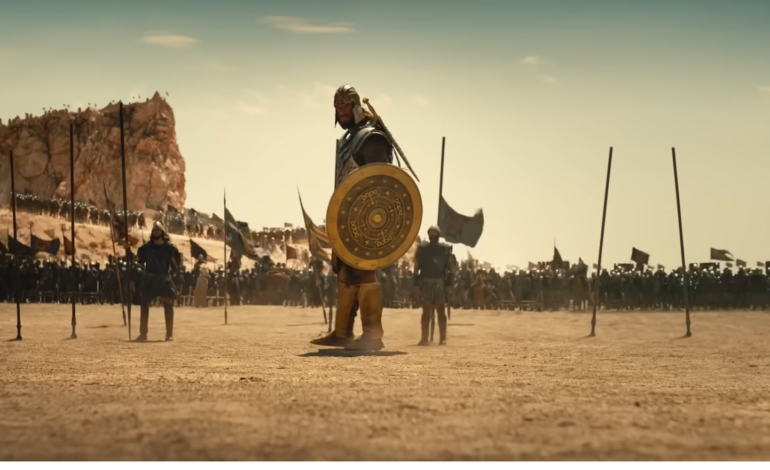

The newest episode of House of David, starring debut Egyptian-born actor Michael Iskander (KIMBERLY AKIMBO), has been turning heads with its visually stunning “Goliath” origin sequence. In an interview with Variety, series creator and co-showrunner Jon Erwin (I Can Only Imagine, I Still Believe) revealed how the use of generative AI allowed for the beautiful imagery.
Speaking with Variety, Erwin details how “The entire scene is driven with generative AI tools as the horsepower to the scene. What we found is that these tools work when combined with traditional tools.” He later states how the project scope was originally much more constricted. Yet, due to the newly approved usage of AI tools in the production process, he and his team were able to envision and deliver a much more detailed and expansive experience.
With generative AI now in the hands of anyone from selfie-takers to do-it-yourself meme creators, Erwin claims using them at professional levels takes certain techniques. “People can make cool images, certainly, and use these tools sort of as consumers, but to really use them in professional ways, it really is how you stack tools together that matters.” Daisy chaining together all the available tools is indeed what Erwin’s team did. Using AI tools such as Midjourney, Magnific, Topaz, Runway, and Kling, they continued what they had created with traditional tools such as Unreal Engine, Nuke, Adobe Photoshop and After Effects. Overall, the season contains 72 shots that involve the use of AI, blending classic breathtaking shots with futuristic technology.
Generative AI may be the tool small indie studios like Wonder Project have been needing in order to compete with the bigger studios. With the vision of the project often restricted by underwhelming budgets, small studios can now fully deliver on immersive content at a fraction of the cost. On the record with Variety, Erwin explains, “(AI) allowed us to create these photoreal visuals and tell the story, but doing it in a budget and time frame that we could afford.”
Any good project manager knows that the triple constraint theory isn’t just scope and cost – it’s also time. Erwin boasts the use of these new AI tools has allowed him and his team to create what normally would have taken four or five months, in a matter of weeks. This should be music to the ears of consumers who have become used to never-ending new releases.
Blown away by the capabilities of his new AI tools, the show’s creator marvels at their ability to implement physics such as water, rain, atmosphere, smoke, and wind at levels he has never seen in any other video effects.
Speaking of the common downfall with AI image tools being their lack of human touch, Erwin goes on to note that “the hard part about the sequence is how do you make all of these shots match, and how do you make the sequence human and feel organic.” He adds that the detail is so deep that even the angels’ wings have feathers on them. That might not make it feel more human, but it has helped it feel more organic.
